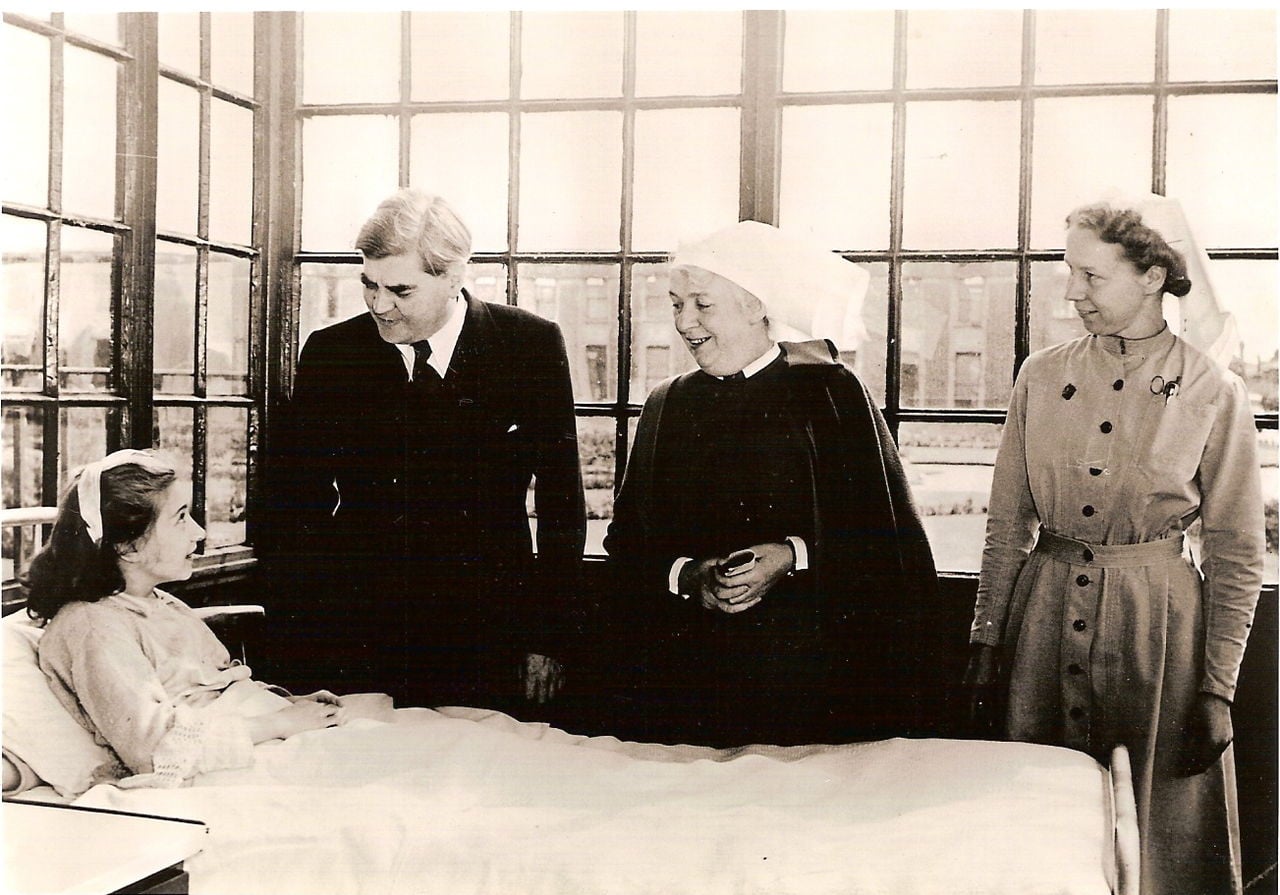NHS 70 series - The changing nature of NHS hospitals
London School of Hygiene & Tropical Medicine https://lshtm.ac.uk/themes/custom/lshtm/images/lshtm-logo-black.png Thursday 14 June 2018NHS at 70 – the modern hospital has evolved considerably, but what service innovations are still needed in response to a continued change in demand?
On the 5 July 1948, a 13 year old girl was admitted to hospital in Manchester to be treated for a liver condition. When Sylvia was well enough to receive visitors, one of the first was Aneurin Bevan, the then Minister for Health. Why? Well, Sylvia Beckingham had inadvertently made history by being the first person to be admitted to an NHS hospital. Last year, her grandson, a hospital doctor, would marry the great granddaughter of another politician who played a crucial role at that time, Clement Atlee, Britain’s post-war Labour prime minister.
The hospital that Sylvia was treated in still exists, although what was then the Park Hospital is now Trafford General Hospital, part of Manchester University NHS Foundation Trust. However, this hospital, like every other one in the country, has changed almost beyond recognition. Throughout the years, key health services research, like that undertaken at the London School of Hygiene & Tropical Medicine (LSHTM), has informed many of these changes.
There are two changes, in particular, that have influenced the development of the modern hospital - the patients being treated and what health professionals can do for them.
Back in the post-war period, hospitals were still dominated by patients with infectious disease. Paediatric wards were full of children with common infections, including many that are now preventable with vaccines, such as measles and polio.
Adult medical wards echoed with the coughs of those with chest infections, many patients with lungs ravaged by a lifetime of smoking – and most alarmingly – these smokers could not only buy cigarettes in hospital, but smoke in their beds!
In 1954, Sir Austin Bradford Hill, Professor of Medical Statistics at LSHTM and Sir Richard Doll, from the Medical Research Council, published the British Doctors Study. For the first time, their study conclusively showed that smoking caused lung cancer. This work was inevitably the catalyst for the long and tortuous process that would eventually lead to a smoking ban not just in hospitals, but in all public places.
The 1950s and 1960s saw a steady improvement in living conditions, and along with it, a decline in infections. New treatments became available for common conditions, like high blood pressure, but as people began to live longer, new health conditions emerged.
Orthopaedic surgeons that were carrying out spinal surgery on tuberculosis patients began doing joint replacements and cardiac surgeons began bypass grafting, now that they no longer were needed to treat rheumatic heart disease. In due course, the surgeons would be displaced by interventional cardiologists, safe in the knowledge provided by the Randomised Intervention Treatment of Angina trial, led by Stuart Pocock at LSHTM, that angioplasty was as safe but much less invasive.
So both the patients were changing and the treatments they needed. But what were the implications for the hospital as a whole? One of the first to ask this question was LSHTM’s Bob Logan. Starting with the apparently simple task of deciding how many beds a modern general hospital should have, Bob initiated the first European health services research studies, building a network of collaborators from among his former students.
Throughout its history, politicians have been concerned about how much the NHS costs, even though it is cheaper than most other health systems. However by the 1990s, they began to pay more attention to what it was achieving, and in particular, to what extent was it actually making people better. This was in large part due to the work of Sir Nick Black, who pioneered the concept of patient-reported outcome measures. The challenge here was not just to measure outcomes but to improve them. Nick, along with Jan van der Muelen, developed a series of national clinical audits in which health professionals could take ownership of evaluations, sharing problems and solutions in a non-threatening environment.
So what now for the NHS hospital of the 21st century? For the past two decades I and others, including colleagues such as Ellen Nolte and Judith Healy, have been looking across Europe, identifying innovations in how people work; such as task shifting and multi-disciplinary teams, how hospitals are designed; with materials, colours, and physical features that promote calm and healing, and how they adapt to changing circumstances; such as interventional radiology or stroke units. This work, undertaken within the European Observatory on Health Systems and Policies, is informing those faced with the challenge of making hospitals fit for an uncertain and complex future.
This expert opinion piece is part of a series that LSHTM are publishing in the lead up to the 70th anniversary of the NHS on 5 July 2018. You can read more about our NHS 70 series and join the conversation online using #NHS70LSHTM.
Our postgraduate taught courses provide health practitioners, clinicians, policy-makers, scientists and recent graduates with a world-class qualification in public and global health.
If you are coming to LSHTM to study a distance learning programme (PG Cert, PG Dip, MSc or individual modules) starting in 2024, you may be eligible for a 5% discount on your tuition fees.
These fee reduction schemes are available for a limited time only.
